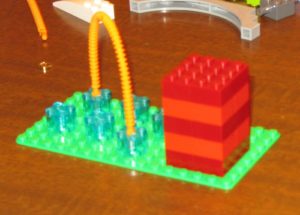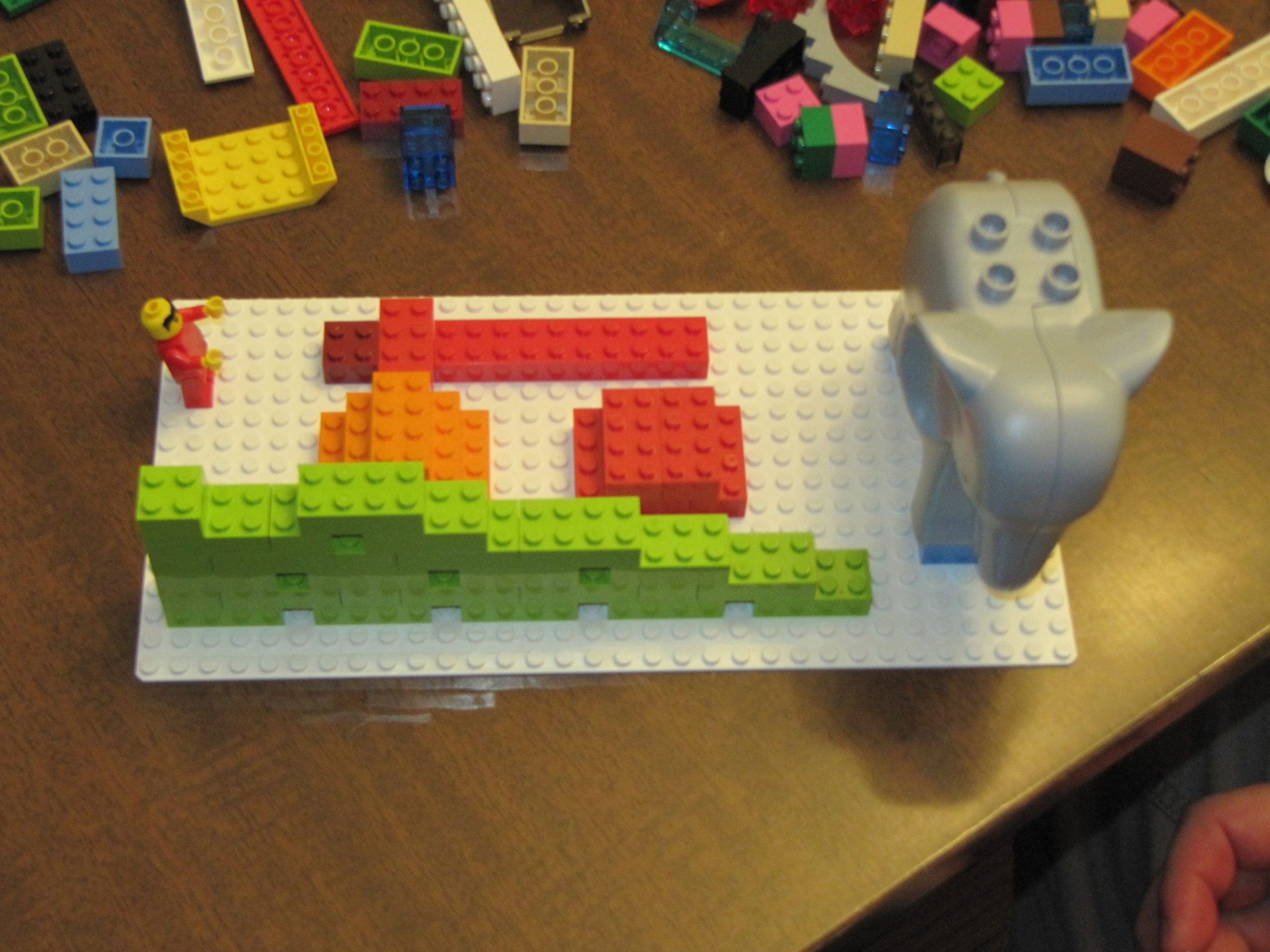Last weekend, a group of local Agilistas got together for BBQ, drink, and to play with Lego. Well, not just play, but StrategicPlay® – with a purpose. And wow, what a result! The outcome was some deep insights into the Agile community that we’d like to share with you.
Setting the Stage
 After a brief introduction and practice with StrategicPlay® model building and sharing, everyone proposed a topic for the session by building a model and explaining it. After voting (with little wee Lego coins), the group decided on the model/topic show to the left: it contrasts the low level of connection within the Agile community and outside with other communities with the ideal/future state where there is a very powerful coherent tower of strength in the community.
After a brief introduction and practice with StrategicPlay® model building and sharing, everyone proposed a topic for the session by building a model and explaining it. After voting (with little wee Lego coins), the group decided on the model/topic show to the left: it contrasts the low level of connection within the Agile community and outside with other communities with the ideal/future state where there is a very powerful coherent tower of strength in the community.
Individual Visions of Agile Community Challenges
Now that the topic was establish, everyone built their own model of it and took turns explaining them. Below, for example, is an individual model. Even though it was by the same participant who created the topic, the process of listening and sharing resulted in a dramatically different model. It tells the story of seemingly growing success of Agile as a movement, but coupled with a disconnect in making a difference with much of the corporate world. The possible elephant in the room is that perhaps Agile is and always has been about innovators and early adopters.

Here is another one – showing factions arguing with each other in order to produce commercial success while the great challenge of waterfall waste is left largely unchallenged.

A Shared Vision of Agile Community Challenges
The next challenge was for the group to work together to create a shared model that:
- Represented the most important concept from each person’s individual model, AND
- Everyone felt comfortable will all parts of the shared model

- The community consists of factions and talking heads with increasing importance on commercial success. (photo left)
- Many customer are still trapped with bad IT. (White man under cargo net in the middle)
- Within the community, there is a common sense of purpose to help people reach a meaningful improvement (Green on right)
- But there is a difficult bridge or chasm to cross to get there. Interestingly, the bridge in this model was unstable.
- By creating rich connections and communication including transparency it is possible to illuminate the way forward (top, middle)
Although I only facilitated the process, I felt a strong connection with the model and ideas in it.
Credits
Credit for the model goes to : Alistair McKinnell, Jason Cheong-Kee-You, Jeff Anderson, Siraj Berhen, Todd Charron, and Sam DeBoni. Great work!
StrategicPlay® looks powerful – What can I use it for?
StrategicPlay® is great for working out solutions to complex problems. The more complex, the better.
It has a wide variety of applications from: team building and organizational change to product innovation to developing company strategy.


